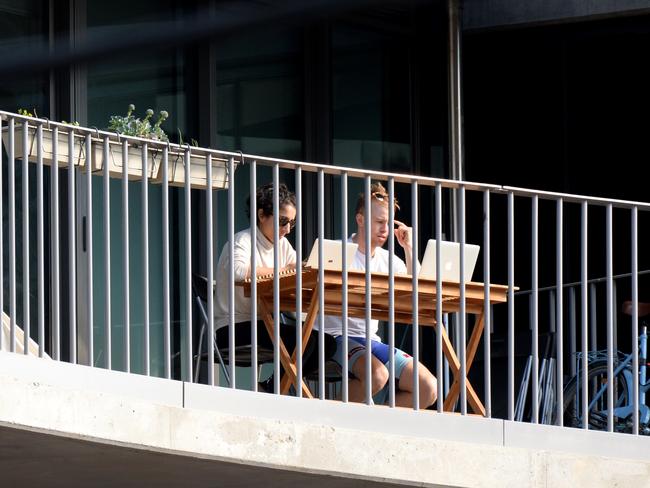Half of Australians say working from home is a ‘fundamental right’
The shift away from a hybrid working model is causing Australians to abandon their jobs in droves, but there’s a way bosses can get them to stay.
Years after the work from home mandate was lifted from the Australian workforce, thousands of Australians are arguing a return to the office is jeopardising their “fundamental right” to work from home.
And they’re quitting their jobs in droves as a result.
A new study from Ranstad found that 52 per cent of white collar employees believe working from home, either full-time or a few days a week, is a “fundamental right”.

In recent months, businesses have started to roll back hybrid working from home arrangements, but employees are reluctant to follow suit.
The study found that although 41 per cent of Australians would hesitantly return to the office if required, nearly one quarter (24 per cent) would start actively searching for another job with a hybrid work arrangement.
In a move that may worry employers, six per cent of employees said they would resign if they weren’t offered a hybrid working arrangement, even if they didn’t have another job lined up.

These sentiments are easily “understandable”, said Angela Anasis, Executive General Manager of Randstad Australia.
“After four years of remote and hybrid work, officer workers feel they have earned the right to work from home and many have made life choices, such as buying a pet or relocating further away from the office based on the assumption that this flexibility was here to stay,” she said.
“It’s no surprise therefore that they’re concerned about this right being stripped away without proper justification.”
The drive for returning to the office is a drop in productivity, 43 per cent of Australian office workers said.
However, evidence suggests the opposite, with 21 per cent of employees earning praise for their productivity, and only five per cent receiving a formal or informal warning about their work output.
Thirty-eight per cent of workers also believe a lack of trust from their bosses and an “outdated” working norms have contributed to the shift away from a hybrid working model.

In an effort to get staff to return to the office, Ms Anasis said “employers should carefully consider how to incentivise attendance, focusing on the carrot rather than the stick”.
Incentives that encourage people to move away from remote working, such as free lunches, gym memberships or free parking and public transport, could help sway the majority of employees, with the 79 per cent saying they’d return to the office if a range of perks were on the table.
However, for nearly a quarter of employees, (24 per cent), the only way to entice them back into the office is with a significant pay rise.
“Working from home comes with its own challenges and employees are the first to admit this,” said Ms Anasis, who added that “dealing with distractions” affects 38 per cent of Australian workers, and 30 per cent find it difficult to “separate work from their personal life”.
To retain talented staff, Ms Anasis said the “key is offering flexibility to those who need it”, while encouraging employers to create an “inviting” work environment that can “draw employees back by choice, not obligation”.




To join the conversation, please log in. Don't have an account? Register
Join the conversation, you are commenting as Logout